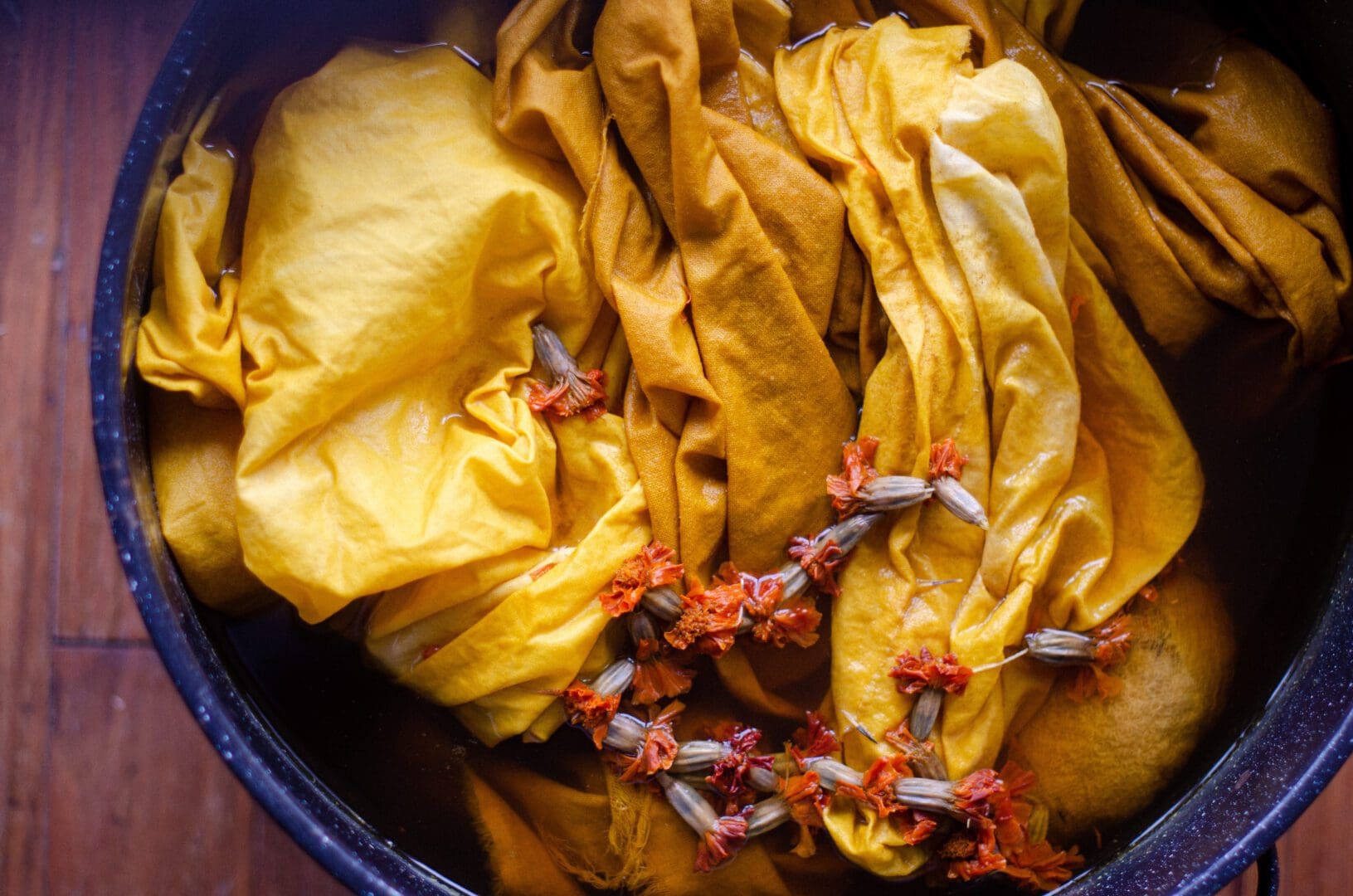
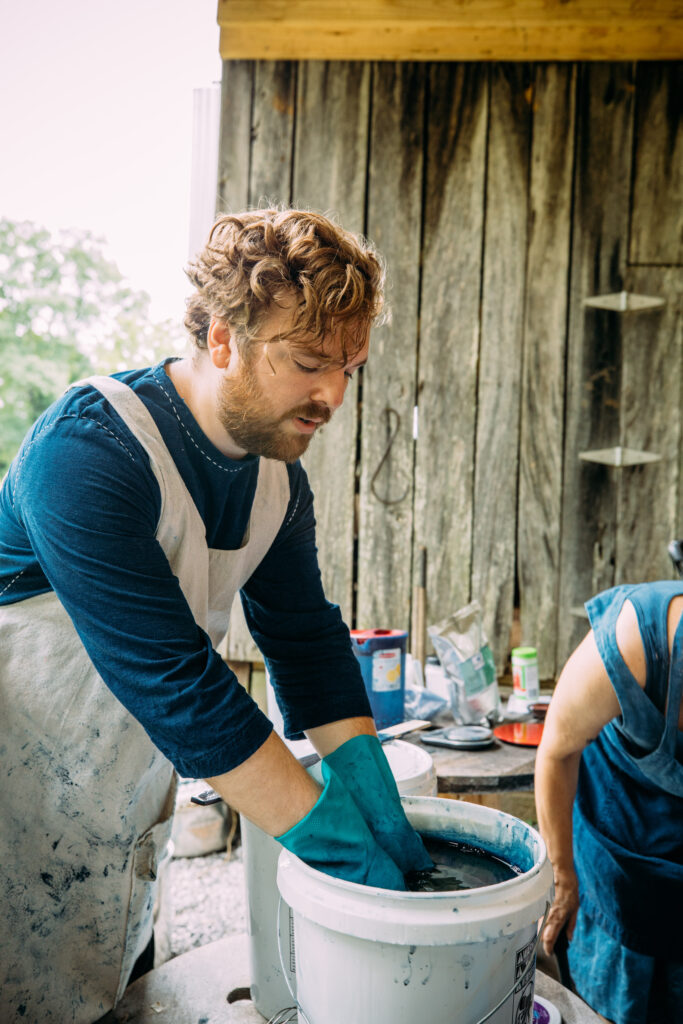
Aaron Sanders Head uses cloth and dye to reflect on place and tell its story. He dyes, stitches, and quilts his fabric, building a storytelling language through design and color. Glowing blues, bright yellows, and deep earth tones reflect a regional palette specific to his home in Greensboro, Alabama. He uses locally sourced materials– dyes grown in his own garden or foraged in the surrounding areas.
This is Aaron’s third year living in Greensboro, about two hours from the town in which he was raised. The importance of nurturing craft and nature was always present for him. Growing up, his mother was an artist and a quilter and his father worked for a plant company. Some of Aaron’s earliest memories are of time spent among the plants in his grandmother’s garden. His reflections on the place are informed by the years he has spent witnessing it – living there and getting to know people and history through observation, conversation, and study.
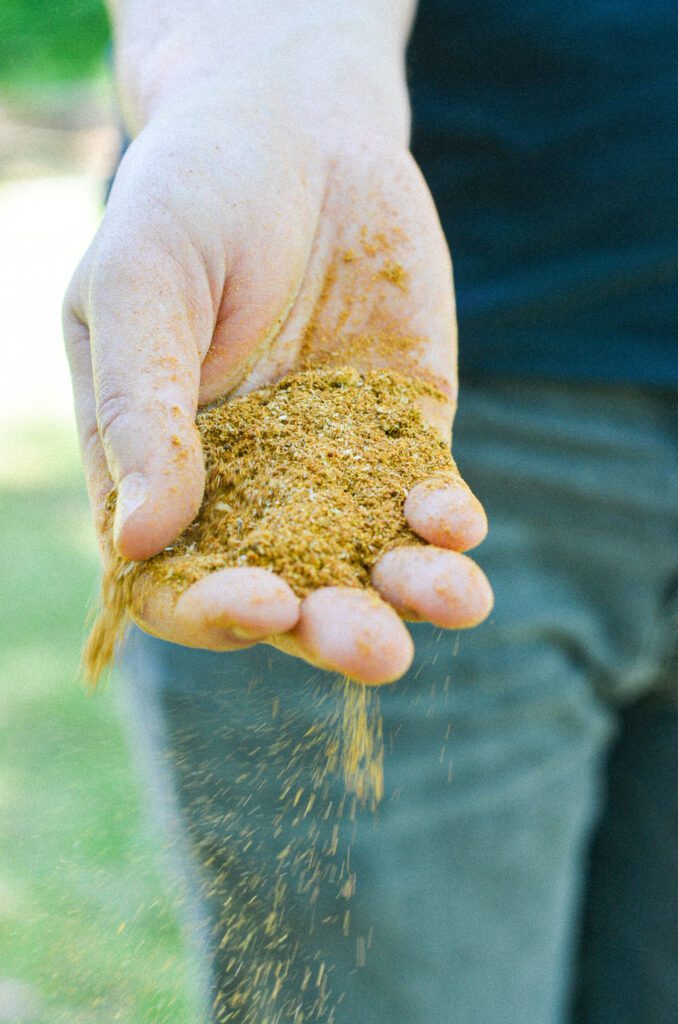
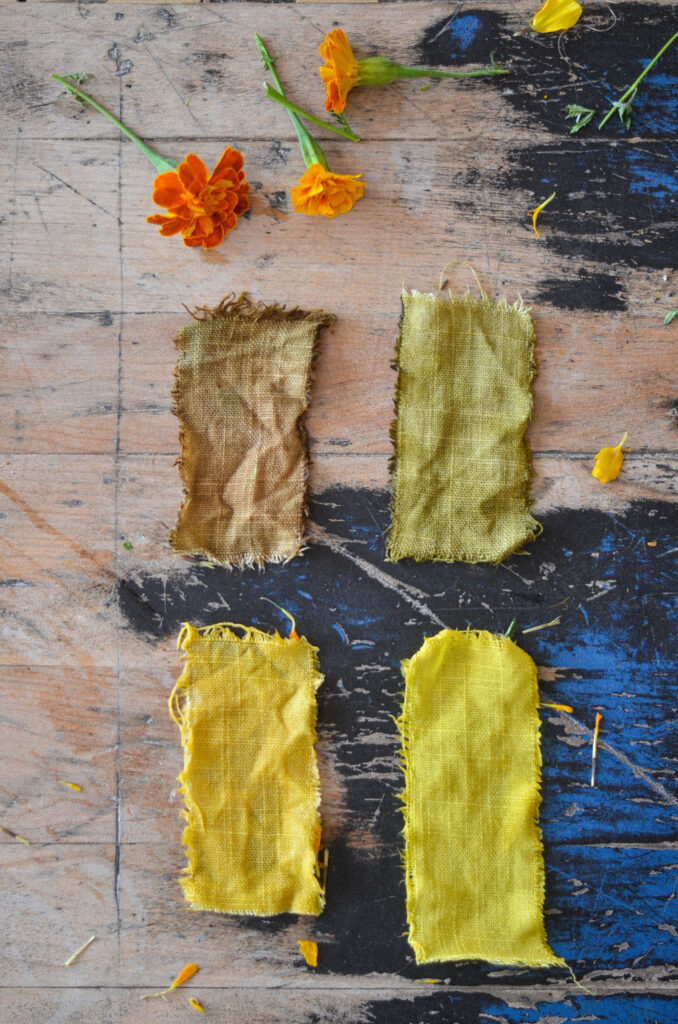
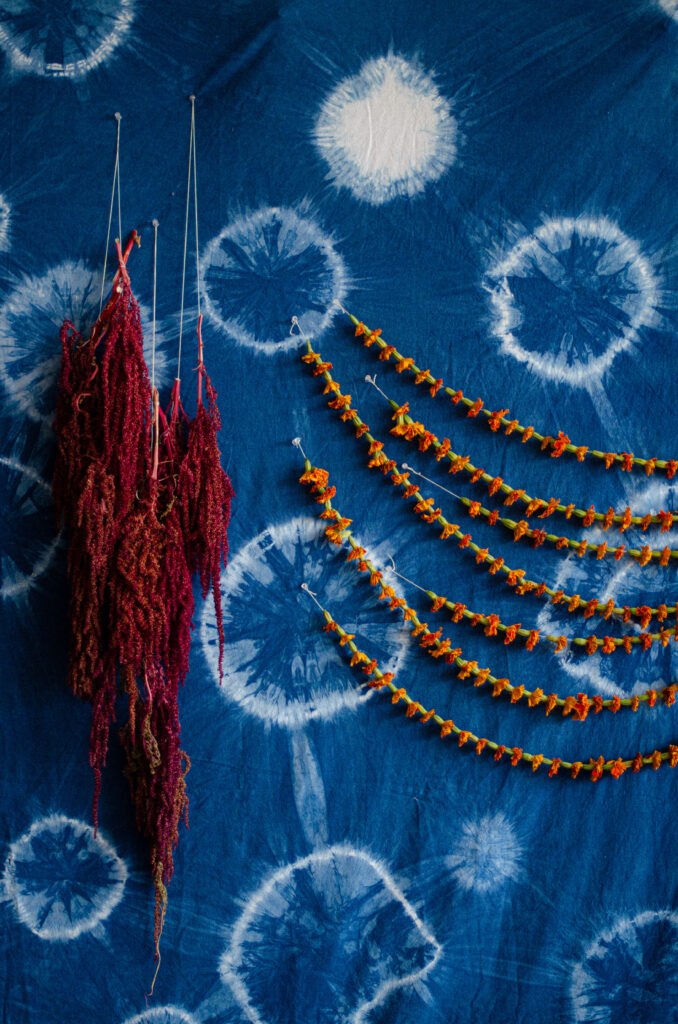
With each year his own garden expands, informed by the lessons learned from the year before. His making process echoes the cycle of seasons. Indigo, madder, cosmos, and marigolds, among others, fill his garden in the summer. The quilts he makes in the summertime reflect the brightness of the palette these plants provide. Through the colder months he forages for fallen osage branches, sumac, and black walnut. With the shift in weather, his palette shifts to deep golden yellows, browns and iron grays. In the winter he stitches by hand, drawn to the quiet, inward nature of the activity, before moving outward again to his garden in the spring.
Aaron’s work reminds us that craft has the powerful ability to change the way we see and relate to the world around us. In the dye pot, plants reveal their inner magic hidden to the unknowing passerby. Creating dye from plants transforms our relationship to them. Directing our attention and care towards the land helps us to nurture our individual relationships with the environment and with each other. What might have been seen as a weed or overgrowth becomes something precious and full of potential. Aaron loves teaching natural dyes for this reason. The local landscape and vegetation become visible and beautiful in a new way. From the swirling liquid of the dye pot, the fabric emerges transformed and ready for use.
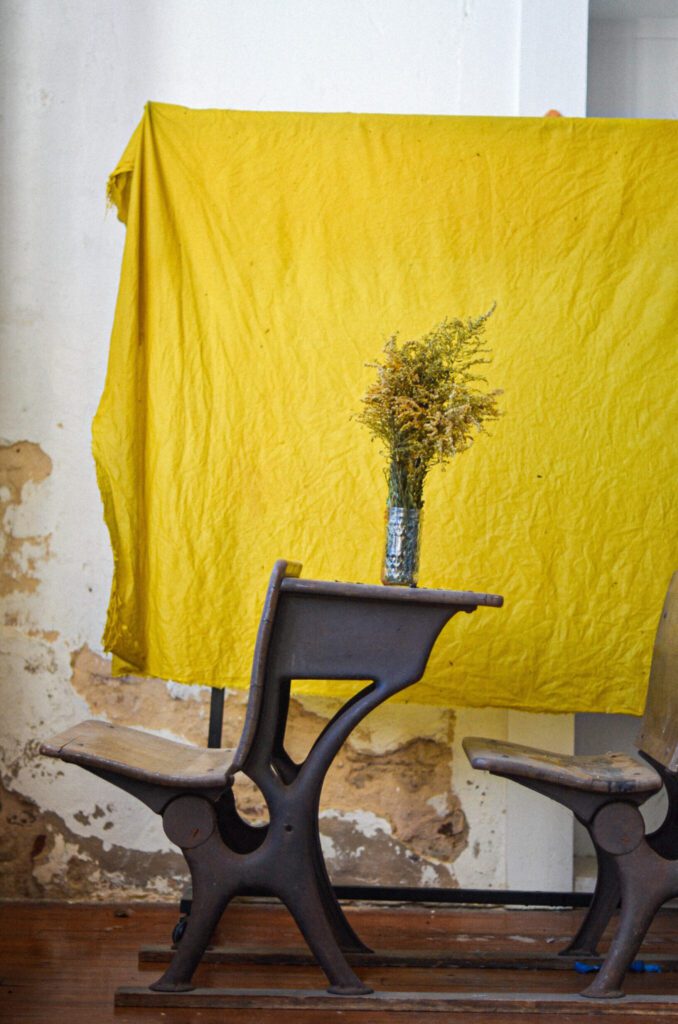

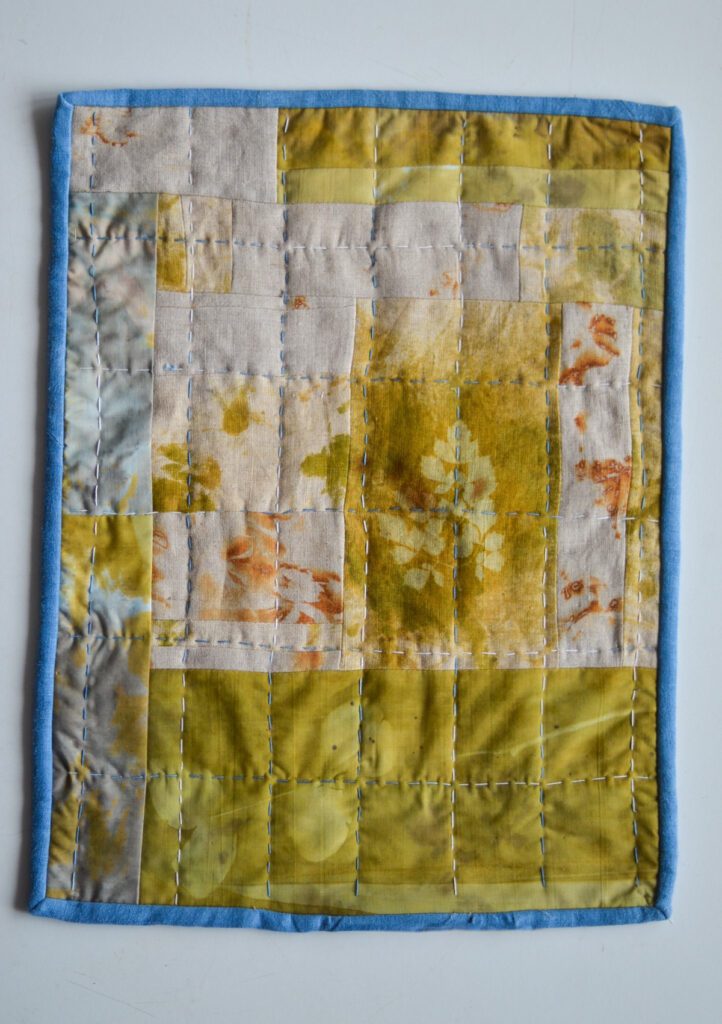
Aaron began quilting as a way of combining so many processes he loves – dyeing, stitching, sourcing textiles, and patternmaking. When he teaches quilting, he encourages students to be expressive. He gives guidelines for technique and shares his wealth of knowledge, while enthusiastically supporting individual exploration and creative freedom. Conversation and deep learning occur over shared interest and intent.
In his quilts, Aaron often repurposes vintage tablecloths and linens, found or given to him. He dyes and overdyes them, cuts, rips, and re-pieces to create new objects that gesture to their past. Through pattern and color choice, he tells subtle stories about the people who live in the area. He reveals his process, at times through the ends of threads left unhidden after quilting or through the visible imprints of rusted objects on cloth. Aaron pays attention and homage to the stories that are often overlooked, shining a light on the layers of perception and experience that make up the community and history.
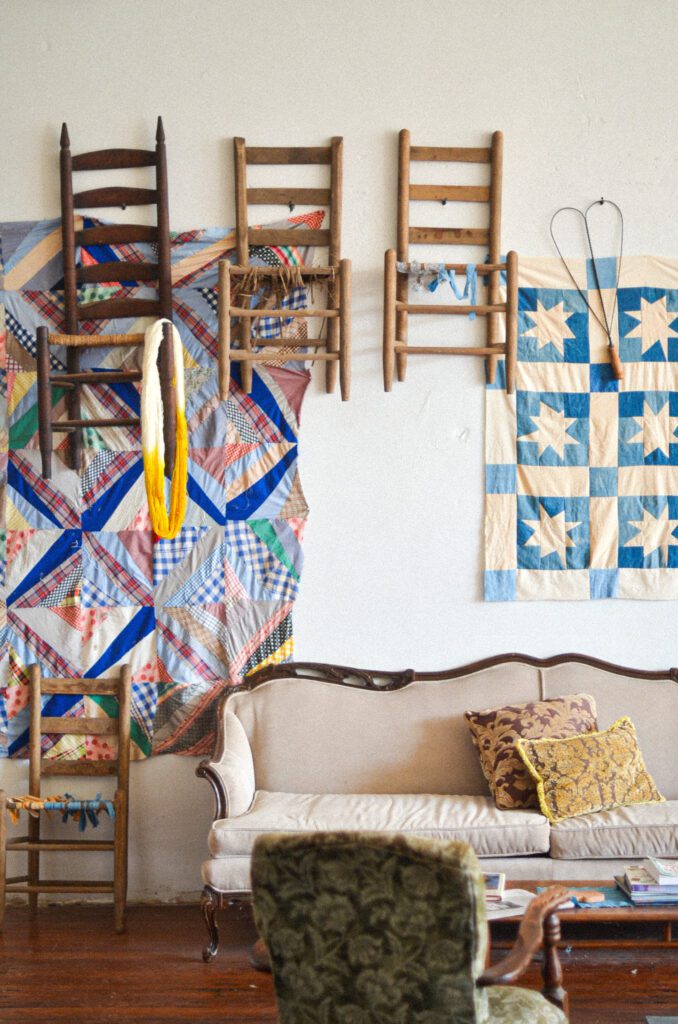
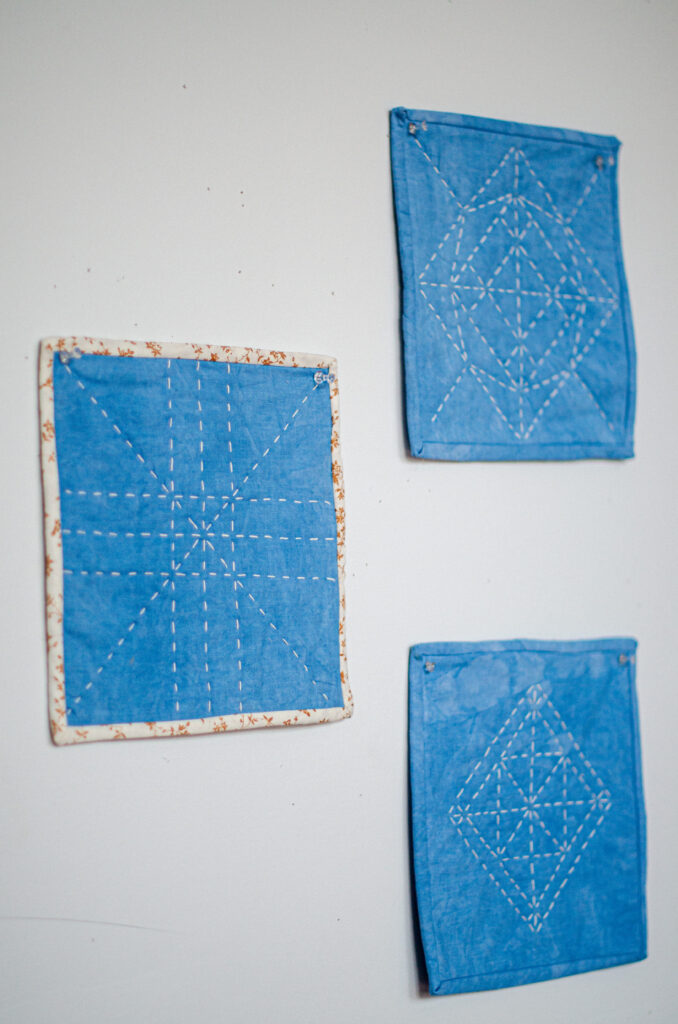
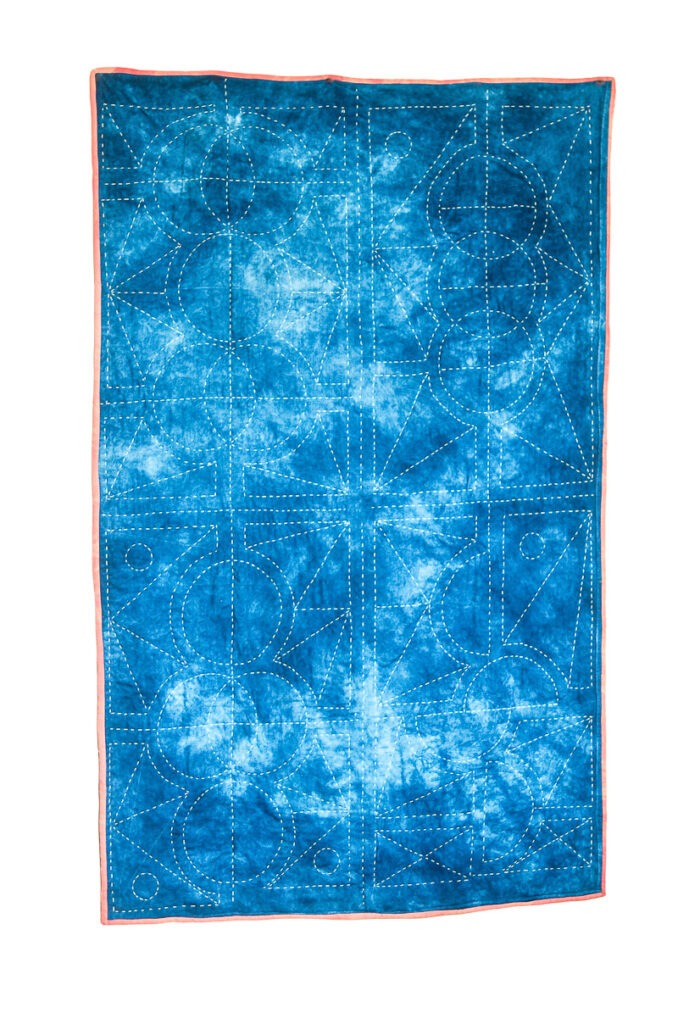
An important part of Aaron’s practice is the making of whole cloth quilts, the top layer of which comprises a single solid piece of fabric. The designs of these unique quilts thereby feature intricate stitched patterns: “In a whole cloth quilt, the lines of quilting do much more than just hold your three layers together— they add texture, design, shadow, and dimension,” says Aaron. These types of quilts have been made for centuries in North America and northern Europe, with makers choosing this style either to show off prized fabric or to display their sewing skills. Aaron believes that whole cloth quilting offers more creative flexibility and freedom to the maker than traditional block quilts, as well as a “more direct way of expressing [one’s] voice.”
Aaron is drawn to whole cloth quilting due to his love of “analyzing and deconstructing historical techniques.” He finds solace in sharing traditions with people who have used the same techniques in ages past, and joining them on a journey of “seeking out beauty and ways to connect, communicate and understand the world through handwork.”
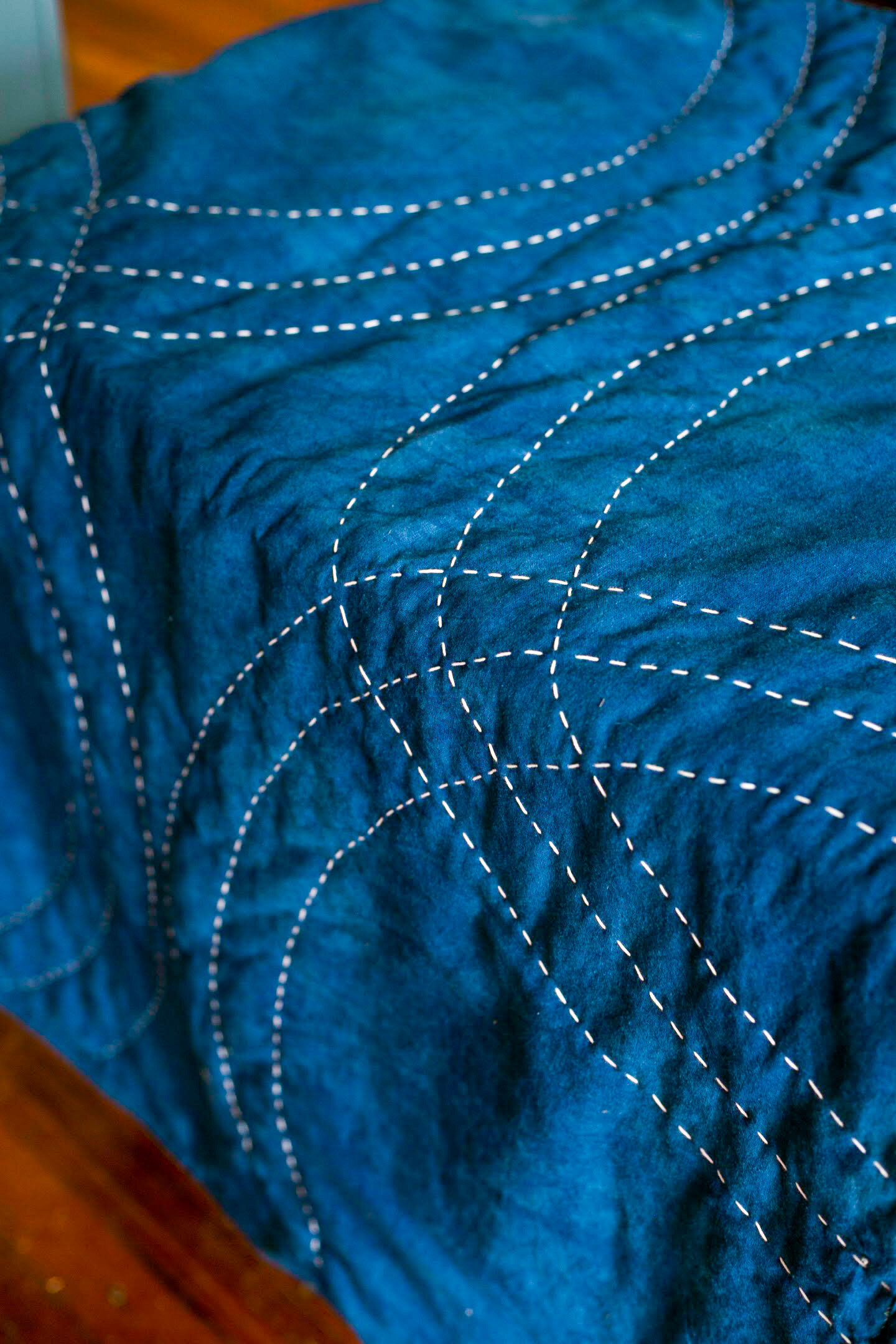
Aaron is teaching Whole Cloth Quilting at Tatter starting April 20th!
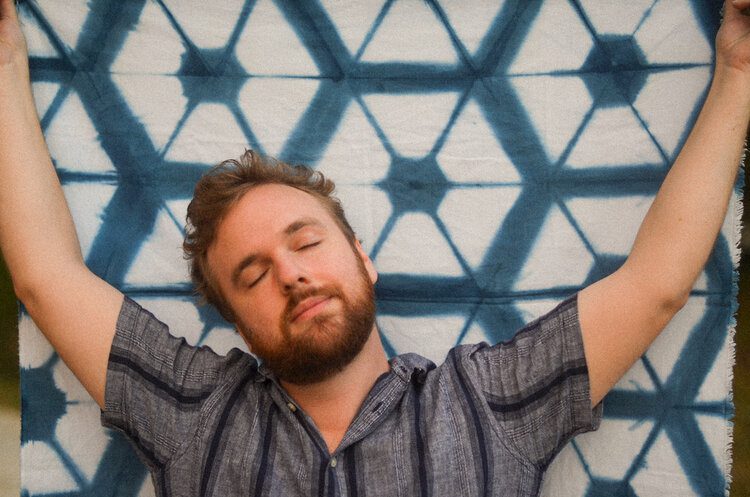
Aaron Sanders Head is a Southern, Alabama-based textile artist. Aaron was raised in rural Grady, AL and Hope Hull, AL, as the youngest of three children from an artist mother and an agricultural worker father. His grandparents were both rural mail carriers, and the times Aaron spent accompanying them on those trips cemented early on a fondness for rural areas and the importance of connection however it can be found. That learned sense of observation combined with inherited family traditions of textile and agriculture inform the unique visual language Aaron works in today, that exists in the worlds of quiltmaking, handwork and natural dyes. Aaron creates quilts and hand-stitched, naturally dyed textiles that explore the lived experiences of rural Alabamians and the bonding traditions that hold rural communities together.
